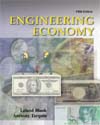Rate of return, or interest rate, is a term used and understood by almost everybody.
Most people, however, can have considerable difficulty in calculating a rate of return i* correctly for any cash flow series. For some types of series, more than one ROR possibility exists. The maximum number of i* values is equal to the number of changes in the signs of the net cash flow series (Descartes' rule of signs). Also, a single positive rate can be found if the cumulative net cash flow series starts negatively and has only one sign change (Norstrom’s criterion). For all cash flow series where there is an indication of multiple roots, a decision must be made about whether to calculate the multiple i* internal rates, or the one composite rate of return using an externally-determined reinvestment rate. This rate is commonly set at the MARR. While the internal rate is usually easier to calculate, the composite rate is the correct approach with two advantages: multiple rates of return are eliminated, and released project net cash flows are accounted for using a realistic reinvestment rate. However, the calculation of multiple i* rates, or the composite rate of return, is often computationally involved. If an exact ROR is not necessary, it is strongly recommended that the PW or AW method at the MARR be used to judge economic justification. |



 2002 McGraw-Hill Higher Education
2002 McGraw-Hill Higher Education